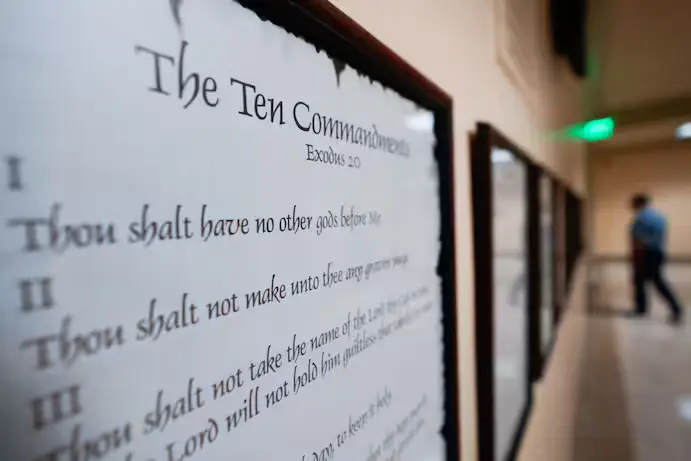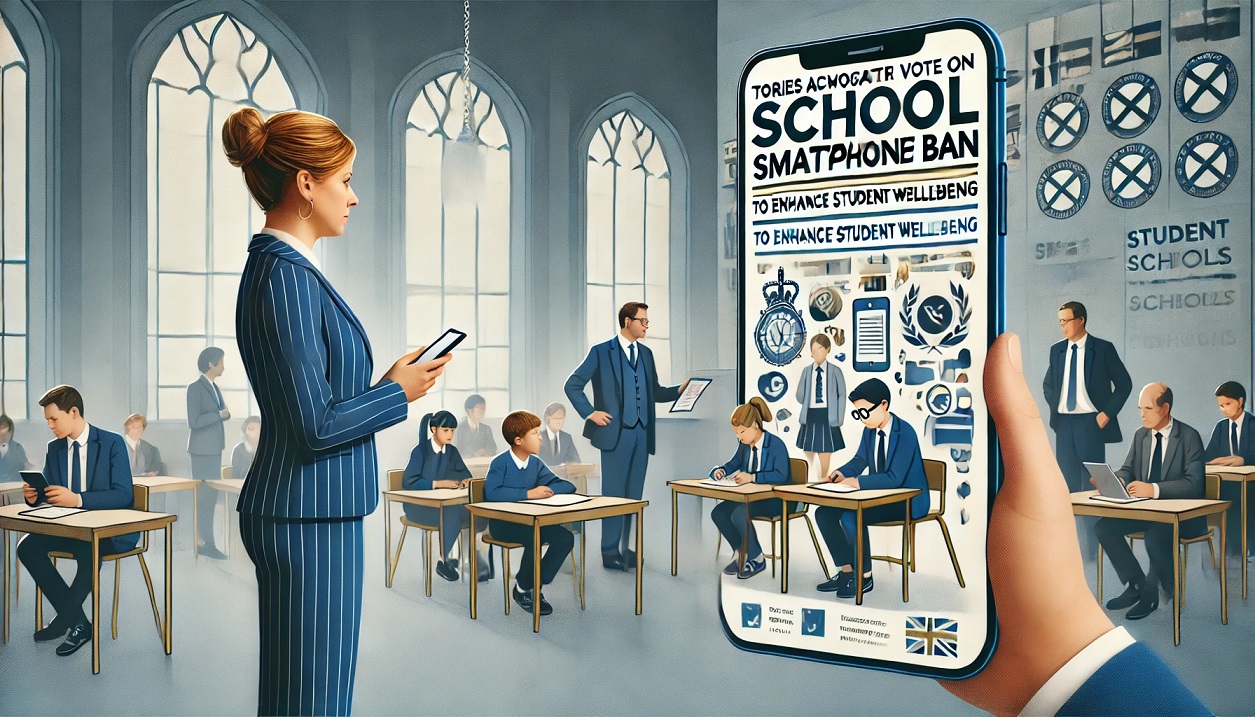In a landmark legal decision that echoes across the American South and far beyond, the 5th U.S. Circuit Court of Appeals has officially struck down Louisiana's controversial law requiring public schools to display the Ten Commandments in every classroom. This bold move, delivered on June 20, 2025, marks a resounding defense of constitutional secularism and upholds the nation’s longstanding principle of separation between church and state.
The unanimous ruling has triggered applause from civil liberties advocates, sparked fury among conservative lawmakers, and reignited one of the oldest legal battles in U.S. education: Should religion be displayed in public classrooms? The appeals court’s decision delivers a sharp “no.”
📜 What Was Louisiana's Ten Commandments Law?
Signed into law in June 2024, Louisiana's House Bill 71 mandated that all public classrooms, from kindergarten through university, must prominently feature a poster or framed document of the Ten Commandments. Each display had to be at least 11 inches by 14 inches in size, with the text rendered in large, legible font, making the Commandments the central visual element in the classroom.
State lawmakers claimed the law had an “educational and historical purpose”, with references to America’s founding values. They emphasized that the measure would be privately funded to avoid taxpayer burden.
But critics saw it for what it truly was — a religious imposition in secular schools, targeting young, impressionable students with mandatory daily exposure to religious doctrine.
🧑⚖️ The Lawsuit That Changed Everything
Shortly after the law’s passage, a group of nine families, representing a diverse range of religious and non-religious backgrounds, filed a lawsuit in federal court. These plaintiffs included Jewish, Unitarian Universalist, atheist, and non-denominational parents and students. They argued that forcing the Ten Commandments into classrooms violated their constitutional rights, especially those enshrined in the First Amendment.
The legal complaint asserted that the law:
- Promoted one religious viewpoint over all others
- Coerced students into exposure to religious texts
- Violated the Establishment Clause of the Constitution
- Failed the “secular purpose” standard set by previous U.S. Supreme Court rulings
This lawsuit quickly escalated into a high-profile legal battle, grabbing national headlines and drawing involvement from major organizations like the ACLU, Americans United for Separation of Church and State, and the Freedom From Religion Foundation.
⚖️ Lower Court Halts the Law
In November 2024, U.S. District Judge John W. deGravelles issued a preliminary injunction, effectively freezing the law before it could be enforced statewide. His ruling was clear:
“The state cannot force schoolchildren to read, internalize, or venerate religious scripture as part of their daily learning environment.”
Judge deGravelles cited the Supreme Court’s own 1980 decision in Stone v. Graham, which struck down a nearly identical law in Kentucky, declaring it unconstitutional.
🏛️ The 5th Circuit's Powerful Ruling
The 5th U.S. Circuit Court of Appeals, one of the most influential federal appellate courts in the country, upheld the lower court's decision in a forceful, unanimous opinion.
In their detailed judgment, the panel of judges found that:
- The law lacked a genuine secular purpose
- It violated binding Supreme Court precedent
- It effectively turned classrooms into religious spaces
- It was coercive and exclusionary, particularly for non-Christian students
They emphasized that although the language of the law masked itself in “historical significance,” the actual purpose and impact of the law was overtly religious.
The judges referred to legislative records, including speeches from lawmakers who openly stated that their goal was to “bring God back into schools.”
✋ Why the Law Was Unconstitutional
At the core of the ruling lies the First Amendment, which clearly prohibits the government from establishing or endorsing a religion. The court pointed out that forcing the Ten Commandments into classrooms violated:
- The Establishment Clause – forbidding government from promoting religion
- The coercion test – students can’t be pressured into religious observance
- The endorsement test – government should not appear to favor one faith
The judges highlighted that young students, in particular, are highly impressionable and would naturally assume that religious texts displayed by authority figures are endorsed by the school and state.
🧠 The Educational Setting Matters
One of the most compelling parts of the decision was the court’s acknowledgment of how powerful the school environment can be in shaping beliefs.
In a classroom, the court said, a poster on the wall isn’t just decoration. It is state-sanctioned messaging that students are expected to internalize, even if silently. Unlike public monuments or personal prayer, students can’t walk away from what’s on the classroom walls.
This creates a form of silent, pervasive coercion — exactly what the Constitution seeks to prevent.
📚 Legal Precedents That Sealed the Case
The court referenced multiple key Supreme Court decisions, including:
- Stone v. Graham (1980) – Declared Ten Commandments in public classrooms unconstitutional
- Lee v. Weisman (1992) – Barred clergy-led prayer at school events
- Santa Fe ISD v. Doe (2000) – Prohibited student-led prayer at football games
- McCreary County v. ACLU (2005) – Blocked courthouse religious displays with religious intent
The judges noted that none of these rulings had been overturned and that they remained binding on all federal courts, including theirs.
🔥 Governor’s Reaction and Political Blowback
Louisiana Governor Jeff Landry, who championed the law from the beginning, blasted the court’s ruling, calling it a “war on Christian heritage.”
He vowed to appeal the decision, even suggesting that the Supreme Court should take up the case to reverse decades of what he described as “hostility to faith in public spaces.”
Other conservative lawmakers echoed these sentiments, framing the ruling as an attack on traditional values and religious freedom.
📢 Civil Liberties Groups Celebrate Victory
On the other side of the legal and political spectrum, civil liberties groups cheered the decision as a decisive win for religious freedom and pluralism.
The ACLU of Louisiana stated:
“This is a win not just for our plaintiffs, but for all students who deserve to learn in an environment free from government-imposed religious messages.”
Many legal analysts emphasized that the ruling preserves religious freedom for all faiths — including the right not to follow any faith at all.
🌐 Broader National Implications
This decision doesn’t just affect Louisiana. It sends a powerful signal to other states considering similar laws. At least three other states — Texas, Arkansas, and South Carolina — have explored or passed legislation requiring the display of religious texts in public spaces.
Legal experts now say those laws may face immediate legal challenges based on the precedent reaffirmed in this case.
In short, the battle over religion in public schools is far from over, but Louisiana’s defeat may slow the momentum for such initiatives in other states.
💬 Real Voices: What Students and Parents Are Saying
Students and parents involved in the lawsuit shared emotional reactions following the ruling:
“We teach our kids to be kind, open-minded, and respectful of everyone’s beliefs. This law did the opposite. It told my daughter that her family’s values didn’t count,” said one Jewish parent from East Baton Rouge.
Another high school student added:
“Every day, I would’ve had to sit under a poster that told me how to live based on a religion I don’t follow. That’s not education — that’s indoctrination.”
Their words reflect the deeply personal impact laws like H.B. 71 can have on children and families.
🎯 Key Legal Takeaways
The appeals court’s decision offers five clear takeaways:
- Public schools are not pulpits – Religious neutrality is essential.
- Mandatory religious displays are unconstitutional, no matter how they’re framed.
- Legislative intent matters – Lawmakers’ religious goals can invalidate a law.
- Courts will uphold past precedent, especially on church-state separation.
- Students deserve classrooms free from religious pressure.
🧭 What Comes Next?
Louisiana’s Attorney General has already announced plans to appeal to the full 5th Circuit en banc, and possibly to the U.S. Supreme Court.
While the current Supreme Court leans conservative, legal scholars are unsure if it will overturn decades of precedent on this issue. So far, even this conservative court has respected core Establishment Clause principles, albeit with new interpretations.
If the case reaches the high court, it could redefine the future of religious expression in U.S. public institutions.
🕊️ Final Thoughts
At its heart, this case is not about being for or against religion. It’s about preserving a public space where every child — regardless of belief — feels equally respected, safe, and free.
Louisiana’s Ten Commandments law crossed that line. It imposed belief in place of education, doctrine in place of dialogue, and exclusion in place of inclusion.
In defending the Constitution, the appeals court didn’t silence religion — it protected the freedom of every student to believe what they choose, not what the state tells them to.

















Comments 0